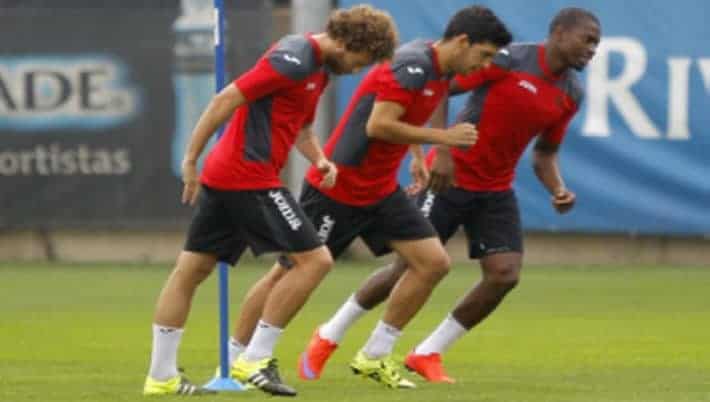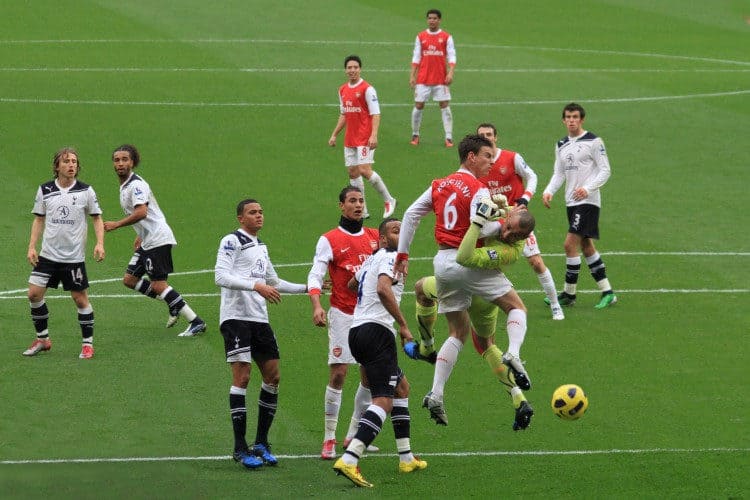Soccer is one of the most analyzed and studied sports today. Physical preparation has evolved exponentially in recent years, and we perfectly understand what conditional demands are necessary to improve performance in competition.
Among the individual abilities we must train and develop, strength in soccer is one of the most important, as it is present in many more moments of the match than one might initially expect.
The manifestations of strength are the same as in any other sport, but to facilitate the terminology in soccer, we can talk about general or basic strength in soccer and specific strength in soccer. (1)
General strength in soccer
In many sports, it is often called base strength, and it encompasses all basic strength exercises aimed at improving the muscle contractile capacity (endurance strength, explosive strength, maximum strength) (2)
Its training is necessary to prepare each player’s body for the specific stimuli of soccer. It is essential to elevate the strength of their muscles to optimal levels so that specific work does not pose a risk of injury to the player.
Core training, proprioception, balance, etc… All these types of training fall within general strength.
Specific strength in soccer
Analyzing the manifestations of strength that occur in soccer, the following forms of strength expression can be distinguished on the field: (3)
Strength in soccer: contact strength
These are all actions of contesting the same space, trajectory, position, etc. They occur constantly in soccer, protecting the ball, making charges, tackles, aerial duels, etc. (4)
The considerable improvement in the physical condition of soccer players has transformed soccer into a faster sport, where the player has less time to perform actions, increasing the number of contacts that occur per match. (5)
The manifestations of strength that occur most in these cases are maximum strength and isometric contractions, requiring the player to have optimal levels of muscle development, both in the lower body and the trunk.
Training tasks for strength in soccer:
- Maximum strength exercises for the lower body.
- Muscle development of the trunk muscles.
- Instability situations.
- Tasks with high player density in small spaces where we increase the occurrence of clashes, hits, or tackles.
Strength in soccer: striking strength
It is evident, but the action of striking is the most used and decisive in soccer. This includes short and long passes, as well as shots on goal.
A player performs an average of 50-70 ball strikes during a match, whose nature and number can vary significantly depending on the specific position the player occupies on the field. (6)
Inter and intramuscular coordination plays a relevant role in the athlete’s ability to perform strikes, both in precision and strength.
Although knee extensors are a very important part of the final result of a good strike, there are other muscles involved whose development is key to avoiding muscle imbalances that pose a risk of injury to the player.
The hip extensors-flexors, knee extensors-flexors, adductor group, and all the sacroiliac muscles are demanded in their manifestations of explosive strength, isometric strength, and eccentric strength during the multiple strikes of the athlete. (7)
A muscular weakness of the aforementioned groups can cause serious problems for the player in the long term, such as the well-known pubalgia.
Training tasks for strength in soccer:
- Isometric and eccentric exercises for the involved muscle groups.
- Isolating specific muscles in isometric and eccentric strength exercises.
- Simulation of striking with bands or in instability situations.
- Specific tasks where one of the manifestations of striking occurs continuously with appropriate rest.
Strength in soccer: jumping strength
The relevance of jumping in soccer is very important, so much so that almost 20% of the goals scored during a season are from set pieces and involve jumping to score. (8)
Depending on the specific position and the category where the team plays, there is variation in the number of jumps performed per match, although generally, there is an average of 10-15 jumps per match for a soccer player. (9)
Regarding its training, not always the players who jump the most or the tallest are the best headers; the most important thing is to “jump well,” which involves good “timing” and a great demand for the player’s coordination and neuromuscular qualities.
Training tasks for strength in soccer:
- Jumping technique, coordination of the involved muscle groups.
- Maximum strength of the lower body.
- Falls in instability situations.
- Specific tasks of 10-20 jumps with and without opposition, with finishing or clearing the ball.
Strength in soccer: displacement strength
Currently, we know in detail how much a soccer player runs per match depending on their position, at what speed they do it, how many accelerations, stops, and decelerations they perform per match. We must analyze and use all this information to our benefit.
The manifestations of strength that occur in the displacement of a soccer player are mainly dynamic maximum strength, explosive strength, endurance strength, and eccentric strength. (10)
When we train the displacement strength of the player, we must not forget to train braking strength (eccentric strength) (11)
It is important not to forget the involvement of the gluteal muscles in running.
Training tasks for strength in soccer:
- Development of the surrounding knee muscles and instability tasks.
- Explosive strength of the lower body and trunk.
- Eccentric strength of the lower body muscles.
- Soccer-specific tasks are the best possible training for displacement strength.
Conclusion on strength in soccer
Strength training is fundamental for the athlete’s performance and to reduce their risk of injury. The conditional demands of soccer are increasingly demanding, so developing strength to its optimal levels will make us have more efficient players in their actions and extend their sports career.
Soccer symposium: if you liked the article and want to expand your soccer training, this interests you.
Bibliography on strength in soccer
- Cometti, G (2007). Physical preparation in soccer. Editorial Paidotribo, 22-38.
- Bosco, C (2000). Muscle strength: Methodological aspects. Editorial Paidotribo.
- Domínguez, E (2003). Strength training in soccer: Theoretical-practical orientations. Abfutbol, 2, 18-35.
- Behm, Anderson (2006). The role of instability with resistance training. The journal of strength and conditioning research, 20(3), 716-22.
- García, O, Ardá, T (2004). Analysis of the factors that condition the effectiveness in set-piece striking in soccer. EFDeportes, 10(69).
- Ekbloom, B (1999). Soccer: Training science manual. Editorial Paidotribo.
- Bosco, C (1991). Physiological aspects of the physical preparation of the soccer player. Editorial Paidotribo.
- Castaño, J (2016). Importance of set-piece actions in soccer: Differences between competitions. Final degree project: University of León.
- L Casáis, J Crespo, E Domínguez, C Lago (2003). Conditional profile of youth division honor soccer players. II World Congress of Physical Activity and Sport Sciences.
- D’Ottavio, S (1998). Soccer didactics. Editorial Societa Stampa Sportiva.




